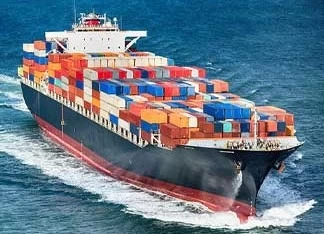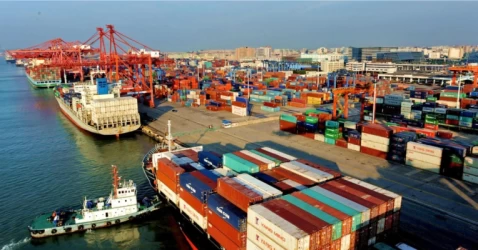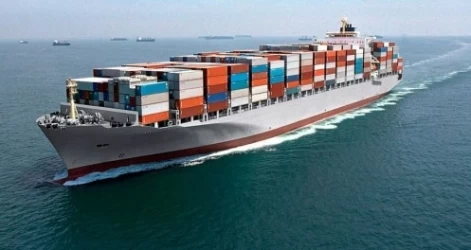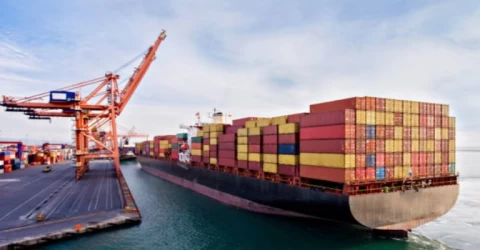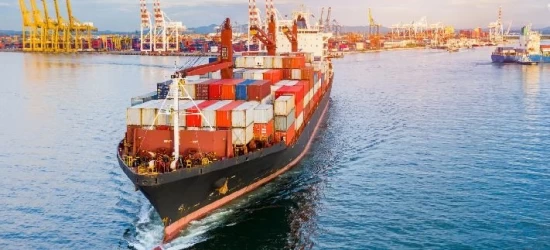Guide to Trade with the UK, Maritime Shipping
The United Kingdom (UK) remains one of the most influential global markets, offering significant opportunities for international trade. Its stable economy, large consumer base, and advanced infrastructure make it an attractive destination for exporters and importers worldwide. For businesses looking to trade with the UK, it is essential to understand the market's regulations, logistics, and particularly maritime shipping, which is one of the most cost-effective and commonly used methods for transporting goods.
This comprehensive guide provides an overview of the steps involved in trading with the UK, the key benefits, and challenges, as well as a detailed examination of maritime shipping processes.
1. Advantages of Trading with the UK
A) Large and Diverse Market
With a population of over 67 million and one of the world’s most advanced economies, the UK presents a vast and diverse market for exporters. This diversity offers access to a wide range of consumers and industries, making it ideal for businesses that can provide high-quality goods that meet international standards. The UK’s demand for high-quality products creates excellent opportunities for those who can cater to its market needs.
B) Trade Agreements and Accessibility
The UK has trade agreements with various countries, including the European Union (post-Brexit), the US, and Canada. These agreements lower tariffs and simplify trade routes, reducing the costs of importing and exporting goods. This competitive advantage makes it easier for goods to enter the UK market at lower costs compared to countries without such agreements.
C) Advanced Infrastructure
The UK has some of the world’s best transport infrastructure, including modern seaports like the Port of Southampton, Felixstowe, and the Port of London. These ports are connected to a comprehensive road and rail network, making it easy to distribute goods efficiently across the country.
2. Steps to Trade with the UK
For businesses planning to enter the UK market, following certain key steps is crucial to ensure a smooth and successful operation.
A) Market Research and Analysis
The first and most critical step is to conduct thorough market research and analysis. Understanding the UK market’s behavior, identifying the demand for certain products, and analyzing competitor strategies are essential in developing a successful trade plan.
Methods of Market Research:
- Using official government data and statistics.
- Analyzing consumer behavior and trends.
- Studying competitors and similar products in the market.
B) Choosing the Right Products
After understanding the market, the next step is selecting products that align with market demand and meet quality standards. The UK market places high value on products that meet international standards, so exporters should ensure their products are compliant with these regulations. Packaging is also a significant factor, as UK consumers appreciate well-presented and environmentally sustainable packaging.
C) Obtaining Necessary Licenses and Documentation
To trade with the UK, ensuring all required licenses and documentation are in order is crucial. Some goods may require special licenses, particularly those in sensitive sectors such as pharmaceuticals, food, and medical equipment. In addition to product-specific licenses, adherence to health and environmental standards is also mandatory.
D) Negotiating and Drafting Contracts
Once the groundwork is complete, negotiating with UK trading partners and drafting trade contracts becomes essential. Contracts should include terms on payment, delivery timelines, guarantees, and insurance. It’s highly recommended to involve legal experts specializing in international trade to ensure the contracts are appropriately structured.
3. Maritime Shipping to the UK
A) Choosing the Right Shipping Method
Maritime shipping is one of the most cost-effective and commonly used methods for transporting goods to the UK. Given the high capacity and lower costs of shipping by sea, this method is highly preferred by businesses trading in large volumes.
Shipping Container Options:
- Full Container Load (FCL): Ideal when you have enough goods to fill an entire container.
- Less than Container Load (LCL): When the volume of goods is small, LCL allows you to share container space with other exporters, reducing costs.
B) Steps in Maritime Shipping
- Loading Goods: After preparing and properly packaging the goods, they must be loaded onto the ship at the point of origin. Depending on your contract terms (such as FCA, FOB), the responsibility for loading might rest with the exporter or the shipping company.
- International Transport: Shipping duration can vary depending on the route and sea conditions. Typically, the transit time from major global ports to the UK takes between 10 to 30 days.
- Customs Clearance: Upon arrival at the destination port, customs clearance is necessary. This step involves submitting all the required documentation, paying duties and taxes, and ensuring the goods meet UK standards before they are released.
C) Shipping Costs
Shipping costs include several factors:
- Loading and unloading charges: Fees for transferring goods onto and off the ship.
- Sea freight: The cost of transporting the goods by sea.
- Insurance: Marine insurance to cover any potential damage or loss during shipping.
- Customs duties: Import duties and taxes calculated based on the type and value of the goods.
D) Marine Insurance
Marine insurance is vital for protecting goods against risks during sea transport, such as ship sinking, accidents, or theft. It's crucial to ensure that goods are adequately insured before shipping, so any potential damages or losses during transit can be compensated.
4. UK Customs and Import Regulations
Clearing goods through UK customs involves several steps that must be completed correctly to avoid delays or penalties:
- Document Submission: Required documents typically include the commercial invoice, packing list, certificate of origin, and shipping documents.
- Payment of Taxes and Duties: Goods are subject to VAT (Value-Added Tax) and import duties depending on their type and value.
- Goods Inspection: Some items may be subject to inspection to ensure compliance with UK laws and regulations.
5. Key Considerations and Challenges in Trading with the UK
A) Understanding UK Trade Laws and Regulations
The UK’s trade regulations have evolved since its departure from the European Union (Brexit), meaning businesses need to stay up-to-date with new rules. Regulations include tariffs, import quotas, and product standards. Ensuring compliance with these regulations is essential to avoid legal issues and delays.
B) Building Strong Partnerships
Establishing strong relationships with UK trading partners is critical to long-term success. Trust and mutual understanding will help create smoother operations and greater opportunities for expanding into new markets.
C) Cultural and Language Differences
Although the UK is a multicultural society, understanding local customs, business etiquette, and language nuances can help in building effective business relationships. Sensitivity to cultural differences and clear communication can play a vital role in negotiation and collaboration.
Conclusion
Trading with the UK offers immense potential due to its large and diverse market, advanced infrastructure, and numerous trade agreements. However, success in this venture requires a thorough understanding of the market, adherence to UK trade regulations, and careful planning for maritime shipping. By following the outlined steps and staying informed about the latest trade policies, businesses can take full advantage of the opportunities available in the UK market.
If you have any specific questions or need further assistance, feel free to ask!

